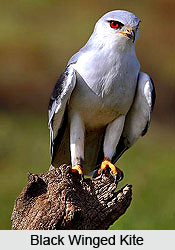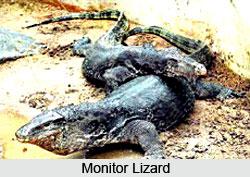 In fact, it is acclaimed for being the only national established in the heart of a metropolitan town. It has rich biodiversities. More than thirty species of trees and plants are found here. Huge banyan trees, which are almost centuries old, are special attraction amongst the tourists.
In fact, it is acclaimed for being the only national established in the heart of a metropolitan town. It has rich biodiversities. More than thirty species of trees and plants are found here. Huge banyan trees, which are almost centuries old, are special attraction amongst the tourists.
The formation of Guindy National Park has a rich history behind it. In the beginning, Guindy National Park was a sport reserve. In the year 1958, the British citizen named Gilbert Rodericks owned it, before its transfer to the forest department of Tamil Nadu. The park is an expansion of the ground that is adjacent to the Raj Bhavan, the executive dwelling of the Governor of Tamil Nadu, India. The Guindy National Park is located behind the Kamaraj Memorial, Gandhi Mandapam, and Rajaji Memorial on Sardar Patel road on the southern fringes of Chennai. It has an extension deep inside the estates of the governors, closing in attractive woods, scrub lands, bodies of water and streams. The premier Indian Institute of Technology enjoins in the southeastern borders of the Guindy National Park.
It has rich biodiversities. More than thirty species of trees and plants are found here. Huge banyan trees, which are almost centuries old, are special attraction amongst the tourists. The Guindy National Park has also a parched evergreen scrubs and thorny forest grounds. There are more than three hundred and fifty species of plants consisting of climbers, shrubs, grasses and herbs. Near about twenty-four forms of trees, namely, the Sugar apple, Atlantia monophylla, Wood-apple, Neem etc are quite significant.
 One can also catch glimpse of the mammalian species thronging the place. There are more than fourteen types consisting of antelope, black buck, Chital, Jackal, Pangolin, Spotted deer, Jungle cat, Large Indian Civet, River otter, Hyena and Fox.
One can also catch glimpse of the mammalian species thronging the place. There are more than fourteen types consisting of antelope, black buck, Chital, Jackal, Pangolin, Spotted deer, Jungle cat, Large Indian Civet, River otter, Hyena and Fox.
The topography of Guindy National Park has wide variance. The thick forests, grasslands and streams that present a perfect locale for more than thirty-seven bird species. These include pheasants, partridges, parrots, quail, paradise flycatcher, Black-winged kite, Honey Buzzard, Pariah kite and Eagle. Numerous bird watchers look forward to migrant birds that gather in the nook of the Guindy National Park. Teals, garganeys, pochards, Medium egrets, large egrets, night herons, pond herons and Asian Open-billed Stork come in huge influx at the time of seasonal changes.
 There are also varieties of `amphibians` and `snakes`. Quite a handful of species, namely, tortoise and turtles are found basking on the muddy shores of the rivers. These include the rare star turtle, lizards, geckos, chameleons and the ordinary Indian monitor lizard. They have set up here, as well as a huge array of butterflies and insects.
There are also varieties of `amphibians` and `snakes`. Quite a handful of species, namely, tortoise and turtles are found basking on the muddy shores of the rivers. These include the rare star turtle, lizards, geckos, chameleons and the ordinary Indian monitor lizard. They have set up here, as well as a huge array of butterflies and insects.
The Guindy National Park coordinates lecture demonstrations frequently in languages like Tamil, Hindi and English. Although the Guindy National Park itself offers not anything much for a genuine wild flora and fauna enthusiasts, the Snake Park is fascinating. The Guindy National Park sums up a favorite picnic spot for the whole people particularly the school-going children.
The Guindy National Park is open for the public viewings. It is opened from 9.00 am, to 5.30 p.m. There are fixed entry fees for different people. Below five years, the entry is free. Also, children above the five years and also below twelve years, the fees are Rs.10.00. The children from Government and aided Schools, aged five to twelve years, is charged Rs.2.00. Also the children from private schools, aged from five to twelve years, are charged Rs.10.00. For adults the fee is fifteen rupees. Several equipments are used for better accessibility. For still camera is Rs.25, handy camera or video camera is Rs.150. Fees for documentary informative films using these cameras are Rs.2000.
There are separate parking charges for different types of vehicles. Free parking is allotted for heavy vehicles, while for motorcars and vans, fees allotted are Rs. 15.00. Motor Cycle has parking fee is 5 rupees.
 To make it easily accessible from every part of the country, transportation system has quite improved. By air, one can reach the Chennai airport, which is eight kms away from the Guindy National Park. Both domestic and international terminals have made arrangements for regular flights, thereby linking it with the main cities of Indian subcontinent and also with quite a few foreign countries, namely, Singapore, USA, U.K., etc.
To make it easily accessible from every part of the country, transportation system has quite improved. By air, one can reach the Chennai airport, which is eight kms away from the Guindy National Park. Both domestic and international terminals have made arrangements for regular flights, thereby linking it with the main cities of Indian subcontinent and also with quite a few foreign countries, namely, Singapore, USA, U.K., etc.
Guindy National Park has the adjacent Guindy station, better known as the Suburban Track, almost 1 km away. The central station of the Chennai is almost twelve kms. Almost nine kms away from it, there is Chennai Egmore. The city of Chennai is adequately connected by the rail with the important towns and cities within and also away from the state.
By roads also, the state transport department have organized both government and private buses linking Chennai with the major towns and cities of Indian subcontinent. Local trains, city buses, auto rickshaws and taxis are also accessible for local commuting. Guindy Snake Park, previously the site of Madras Crocodile Bank Trust, is just next to the Guindy National Park. There is a Children`s Park and play locale at the northeast area of the park with a huge gathering of birds and animals.



















